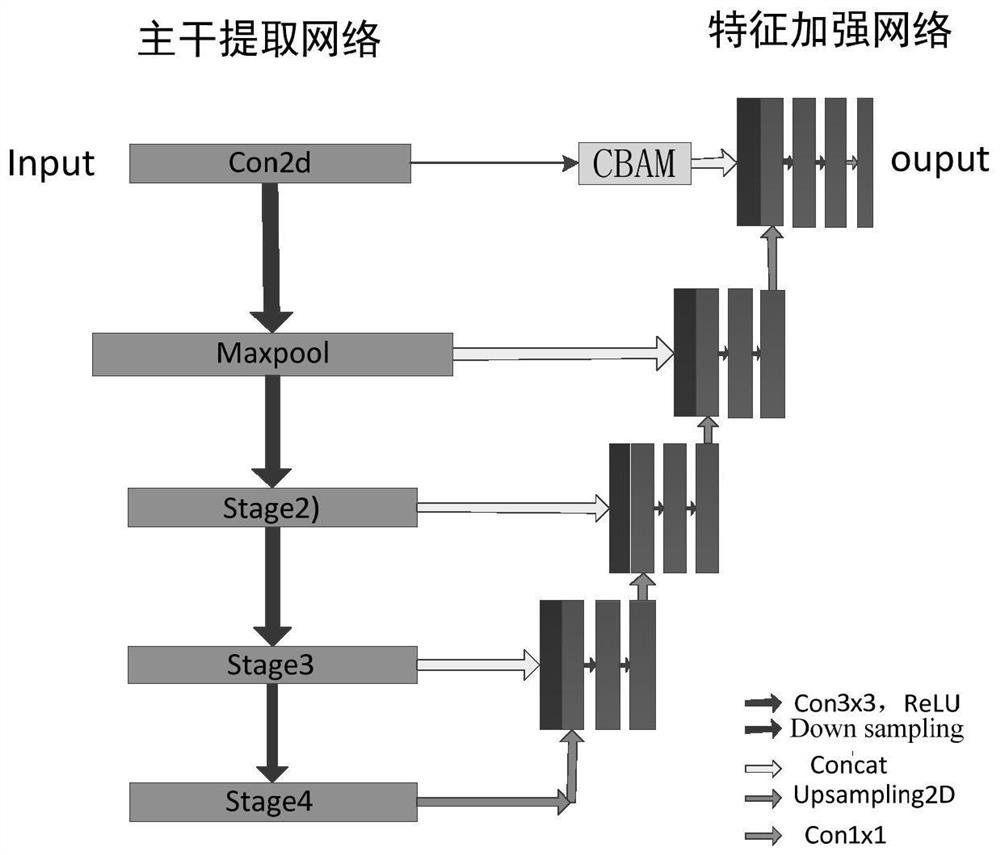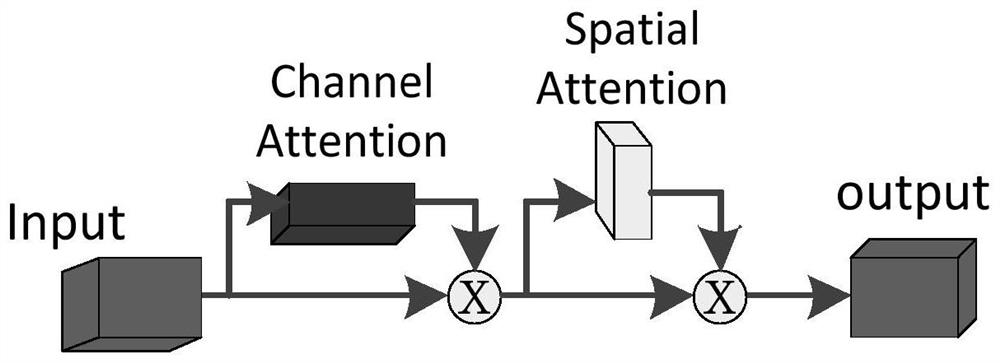Rice sheath blight disease identification method and system based on ShuffleNetV2-Unet
A rice sheath blight and identification method technology, applied in the field of image processing and pattern recognition, can solve the problems of high detection environment requirements, easy confusion, and complex detection environment, and achieve low detection environment requirements, maintain detection speed, and high detection accuracy Effect
- Summary
- Abstract
- Description
- Claims
- Application Information
AI Technical Summary
Problems solved by technology
Method used
Image
Examples
Embodiment 1
[0050] This embodiment provides a method for identifying rice sheath blight based on ShuffleNetV2-Unet, such as figure 1 shown, including the following steps:
[0051] S1: collecting a rice disease data set, the rice disease data set including images with rice sheath blight disease patterns;
[0052] S2: establish a ShuffleNetV2-Unet model, the ShuffleNetV2-Unet model is used to identify rice sheath blight disease patterns;
[0053] S3: Use the rice disease data set in step S1 to train the ShuffleNetV2-Unet model to obtain the trained ShuffleNetV2-Unet model;
[0054] S4: Use the trained ShuffleNetV2-Unet model to identify rice sheath blight on the input image.
[0055] The ShuffleNetV2-Unet model described in step S2 is as follows figure 2 As shown, it includes a backbone extraction network and a feature enhancement network, wherein the backbone extraction network is a pruned ShuffleNetV2 model, and the backbone extraction network extracts features of different sizes of t...
Embodiment 2
[0070] In this embodiment, on the basis of Embodiment 1, the ShuffleNetV2-Unet model further includes a CBAM attention mechanism module, such as image 3 As shown, the input of the CBAM attention mechanism module is the first extraction feature output by the pruned ShuffleNetV2 model, and the input of the CBAM attention mechanism module is connected with the output of the third-layer upsampling layer, The CBAM attention mechanism module is specifically:
[0071] The CBAM attention mechanism module includes a channel attention module and a spatial attention module, wherein the input feature is multiplied by the input feature itself after passing through the channel attention module to obtain an intermediate feature, and the intermediate feature passes through the spatial attention module. After multiplication with the intermediate feature itself, the output feature of the CBAM attention mechanism module is obtained.
[0072] Use the public field provided by the Chinese Academy...
Embodiment 3
[0077] A rice sheath blight recognition system based on ShuffleNetV2-Unet, such as Figure 5 shown, including:
[0078] a data collection module, the data collection module collects a rice disease data set, and the rice disease data set includes images with rice sheath blight disease patterns;
[0079]a model building module, the model building module builds a ShuffleNetV2-Unet model, and the ShuffleNetV2-Unet model is used to identify rice sheath blight disease patterns;
[0080] A model training module, the model training module uses the rice disease data set in step S1 to train the ShuffleNetV2-Unet model to obtain the trained ShuffleNetV2-Unet model;
[0081] The identification module uses the trained ShuffleNetV2-Unet model to identify rice sheath blight on the input picture.
[0082] The same or similar reference numbers correspond to the same or similar parts;
[0083] The terms describing the positional relationship in the accompanying drawings are only used for exe...
PUM
 Login to View More
Login to View More Abstract
Description
Claims
Application Information
 Login to View More
Login to View More - R&D
- Intellectual Property
- Life Sciences
- Materials
- Tech Scout
- Unparalleled Data Quality
- Higher Quality Content
- 60% Fewer Hallucinations
Browse by: Latest US Patents, China's latest patents, Technical Efficacy Thesaurus, Application Domain, Technology Topic, Popular Technical Reports.
© 2025 PatSnap. All rights reserved.Legal|Privacy policy|Modern Slavery Act Transparency Statement|Sitemap|About US| Contact US: help@patsnap.com



